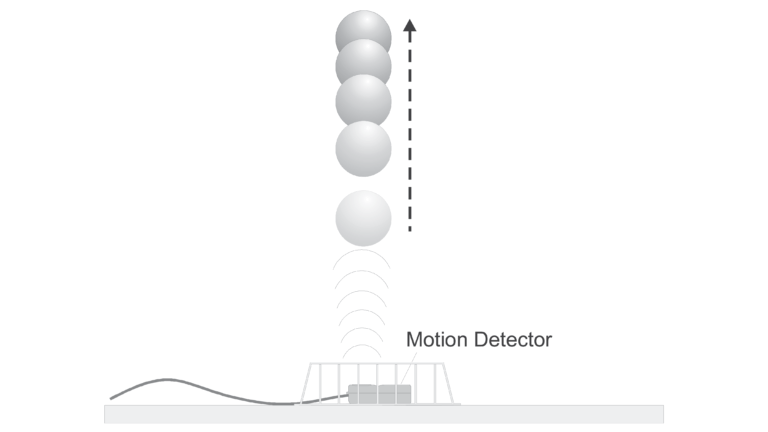
Introduction
When a juggler tosses a bean ball straight upward, the ball slows down until it reaches the top of its path and then speeds up on its way back down. In terms of energy, when the ball is released it has kinetic energy, KE. As it rises during its free-fall phase it slows down, loses kinetic energy, and gains gravitational potential energy, PE. As it starts down, still in free fall, the stored gravitational potential energy is converted back into kinetic energy as the object falls.
If there is no work done by frictional forces, the total energy remains constant. In this experiment, we will see if this is true for the toss of a ball. We will study these energy changes using a Motion Detector.
Objectives
- Measure the change in the kinetic and potential energies as a ball moves in free fall.
- See how the total energy of the ball changes during free fall.
Sensors and Equipment
This experiment features the following sensors and equipment. Additional equipment may be required.
Option 1

Option 2

Option 3

Correlations
Teaching to an educational standard? This experiment supports the standards below.
- International Baccalaureate (IB) 2025/Physics
- The students should understand the principle of the conservation of energy
- The students should understand that mechanical energy is the sum of kinetic energy, gravitational potential energy and elastic potential energy
- The students should understand that if mechanical energy is conserved, work is the amount of energy transformed between different forms of mechanical energy in a system, such as: the kinetic energy of translational motion as given by Ek = 1/2mv2 = p2/2m
- The students should understand that if mechanical energy is conserved, work is the amount of energy transformed between different forms of mechanical energy in a system, such as: the gravitational potential energy, when close to the surface of the Earth as given by ΔEp = mgΔh
Ready to Experiment?
Ask an Expert
Get answers to your questions about how to teach this experiment with our support team.
- Call toll-free: 888-837-6437
- Chat with Us
- Email support@vernier.com
Purchase the Lab Book
This experiment is #16 of Physics with Vernier. The experiment in the book includes student instructions as well as instructor information for set up, helpful hints, and sample graphs and data.

